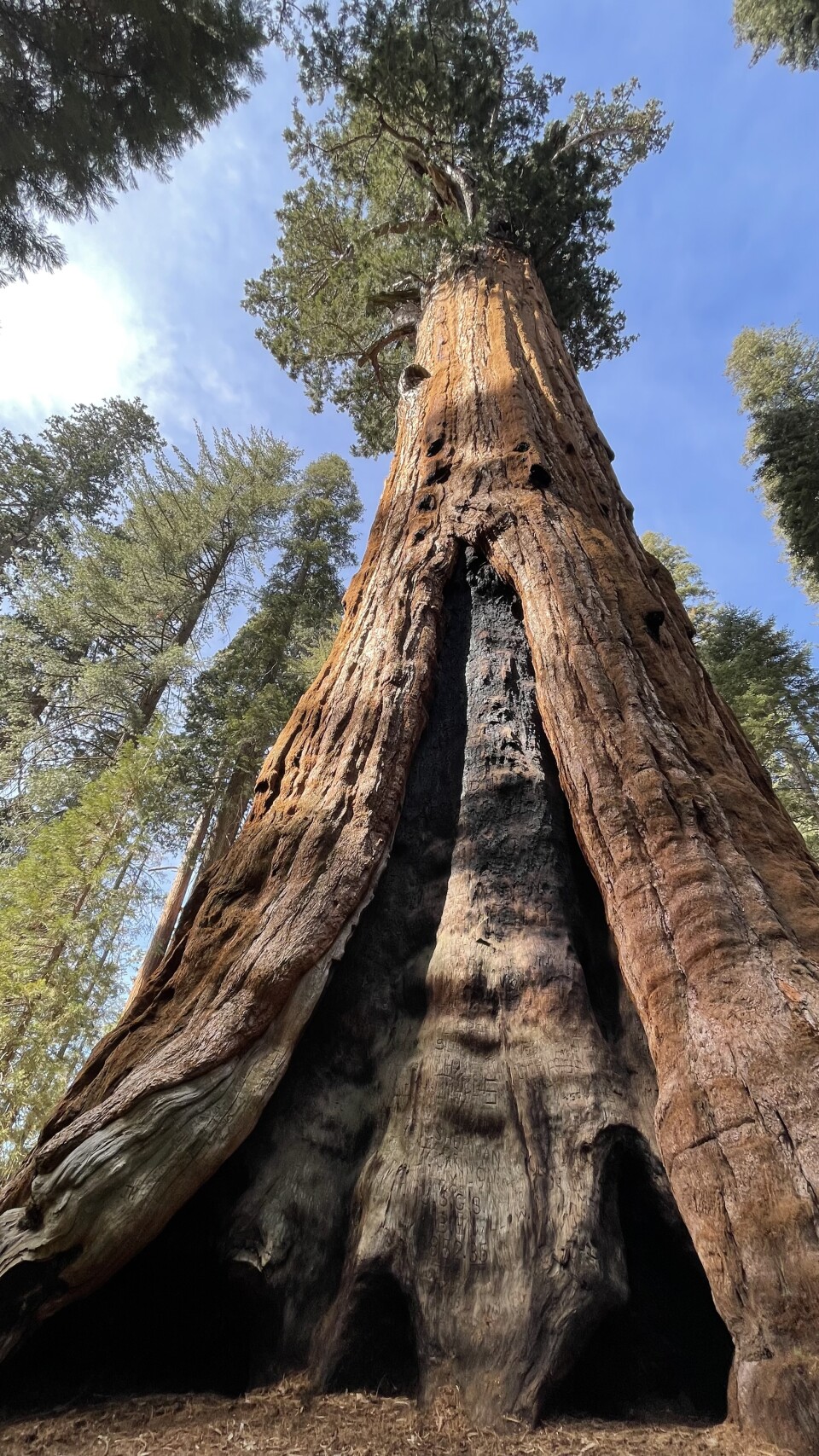With our free press under threat and federal funding for public media gone, your support matters more than ever. Help keep the LAist newsroom strong, become a monthly member or increase your support today.
A Deadly Threat To General Sherman And California's Other Beloved Giant Sequoias

Last week, General Sherman, California's most famous giant sequoia, got a checkup.
Climbers from the Ancient Forest Society scaled the tree looking for signs of a sequoia bark beetle infestation — entrance holes where adults had burrowed into the branches and laid their eggs; exit holes, where larvae chewed their way out; globules of pitch, indicating the tree was putting up a fight, trying to push the beetles out.
And, simply, whether Sherman's canopy looked healthy.
The beetles can kill a tree within a year, starting at the top and working their way down over several generations. Feeding on the cambium, they can interrupt the tree's ability to distribute water and nutrients.

“There’s an attempted entry hole here and here," said Wendy Baxter, a forest canopy ecologist with the organization, which provided a video of the effort.

“This one may have gotten a little bit of a pitch response here," she said.
“It doesn’t look like the beetles have gotten much beyond the bark."

The good news is that while the team found entry holes, they didn't see any evidence of an active attack. The beetles had either abandoned the effort or Sherman had shoved them out with its pitch.
For now, the world's largest tree (by volume), is safe. But an increasing number of deadly Sequoia bark beetle infestations have left scientists rushing to figure out why this is happening, the extent of the damage and potential treatments to prevent the deaths of some of California's most beloved trees.

A new-ish threat
While these native beetles have been known since the early 19th century, it wasn't clear they were capable of killing large sequoias.
"It was sort of like, 'oh neat, here's an insect that feeds on fallen sequoia branches, but we don't need to be worried about it,'" said Christy Brigham, chief of resources management and science at Sequoia and Kings Canyon National Parks.
"But during the 2012–2016 drought we detected large sequoia trees dying in this new way from the top down. And when we climbed those trees we found green branches that were completely infested with these beetles."

So far, they've found 40 trees that've been killed by beetle attacks. Not nearly as catastrophic as the damage that wildfires have done, but given how fast the trees are dying, and that there are entire groves of trees that've not yet been inspected, there are reasons to be concerned.
Out of the 105 trees that the Ancient Forest Society has climbed, about 75% showed some evidence of attacks, according to Anthony Ambrose, the organizations executive director. That doesn't mean each of those trees is doomed, and it's unclear how each will hold up, all it means is that beetles appear to be widely present in ways that they weren't before.
Over the next two years the organization will survey multiple giant sequoia groves, including in Calaveras Big Trees State Park, Giant Forest in Sequoia National Park and Mariposa Grove in Yosemite National Park.

It's not completely clear why this is happening.
Considering it seemed to start during the drought, it could be that the trees were so weakened by a lack of water and the extreme heat (associated with climate change), that the beetles were able to take advantage, similar to what happened in conifer forests across the Sierra Nevada. It can take sequoias multiple years to recover once rain returns.

Fire could also be playing a role, according to Brigham. There seems to be a correlation between beetle attacks and severe fire scars at the base of the trees. While sequoias need fire to survive, extreme fires like those that we've seen in recent years, can damage their roots and trunks, compromising their ability to transport nutrients to the demanding, full green crown several hundred feet off the ground.
Is there any hope?
While there aren't any known solutions at the moment, a number are being explored.
Brigham said that they're considering tarping, chipping or removing fallen branches from around individual trees to see if it reduces beetle populations. Or, potentially watering trees under attack to reduce stress and enhance beetle fighting abilities.
Another possibility is the utilization of chemicals given off by the trees to attract beetles to traps — a technique that's used to help prevent the spread of the Red Palm Weevils throughout the state.
“The trees aren’t going to go extinct because of this beetle most likely," said Nate Stephenson, scientist emeritus with U.S. Geological Survey, who's long studied giant sequoias. “It is something worth watching and studying because we know so little at this point that better safe than sorry. Let’s understand it better and learn as much as we possibly can.”











